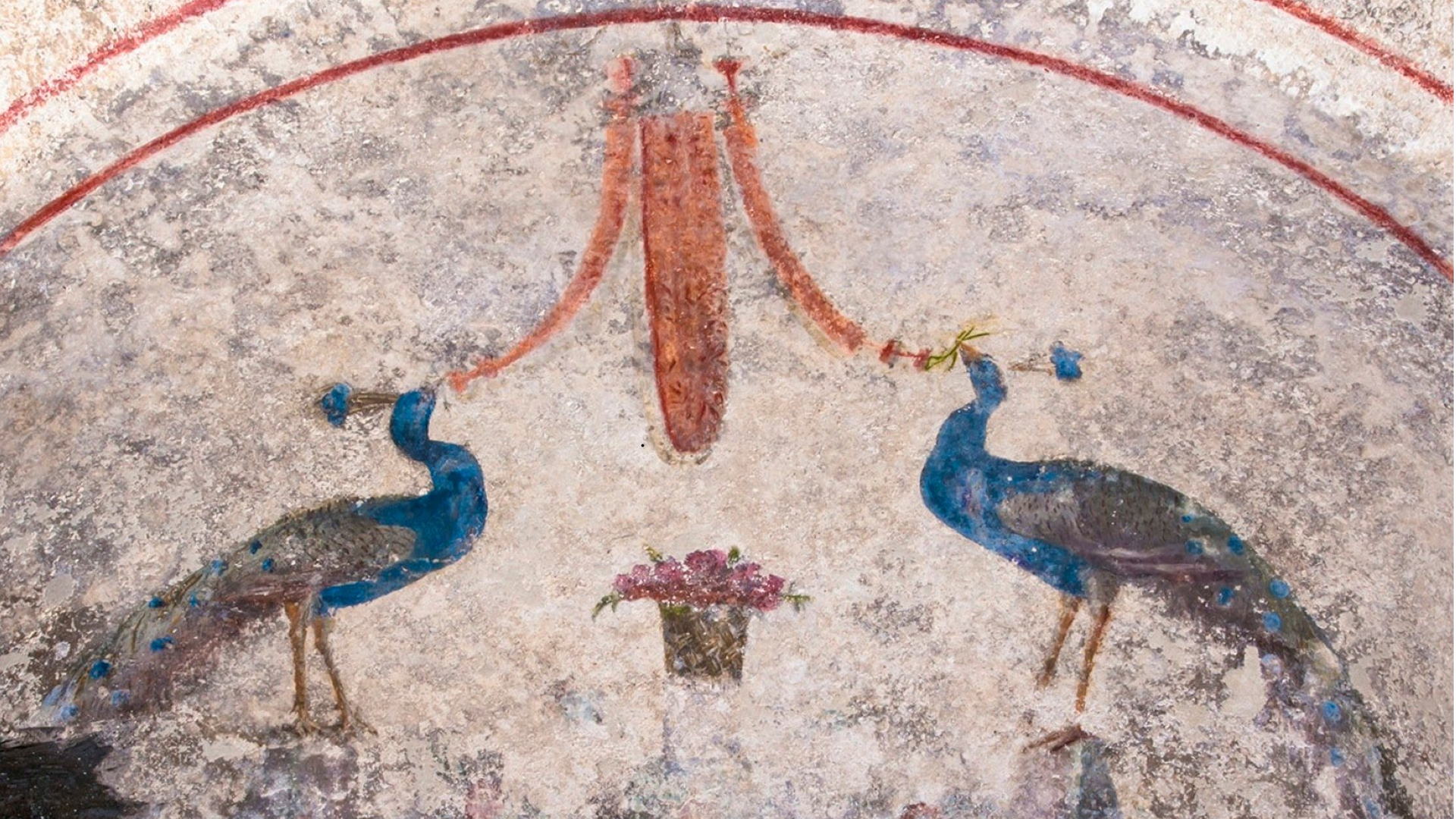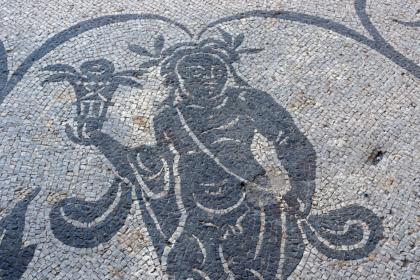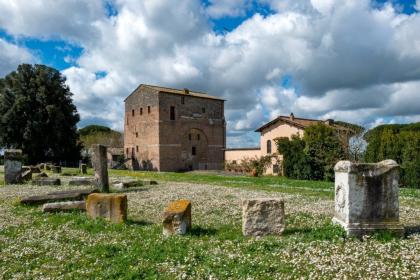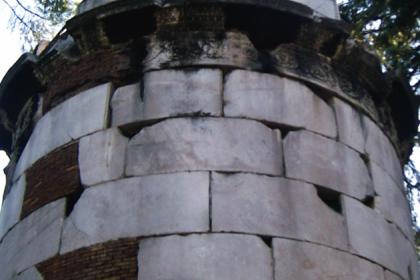
The Tombs of Fadilla and of the Nasonii rise along the Via Flaminia, between Corso Francia and Saxa Rubra. These are two elegant mausoleums carved into the tuff, both dating back to the imperial age.
The small and well-preserved Tomb of Fadilla was discovered in 1923 and owes its name to a small marble plaque, inserted on the wall, with a funerary epigraph dedicated by the husband to his wife Fadilla, a common name in the Antonini family. It is a rock tomb with a burial chamber that houses arcosolium tombs (niches dug and surmounted by an arch, in which the sarcophagi were placed). On the floor there is a mosaic with black and white geometric designs, while refined frescoes cover the walls and the vault with floral motifs, peacocks, winged geniuses, faces of children and personifications of the seasons. The type of tomb and the brick stamps on the bricks have allowed the monument to be dated to the end of the 2nd century AD.
Discovered at the end of the 17th century during the works for the expansion of the Via Flaminia, the Tomb of Nasonii has a rather troubled history. In fact, over the centuries, it has suffered countless damage and looting: from the beginning, Pope Clement X allowed his nephew to appropriate several portions of frescoes that were used to adorn his villa on the Esquiline. The original floor, with black and white mosaics, has also been lost. But perhaps the greatest damage was created by the mining activity that eroded the original hill, facilitating the infiltration of water inside the mausoleum.
To get an idea of the original appearance of the tomb, panels were made from the paintings of the painter and engraver Pietro Santi Bartoli, who portrayed the decorations of the tomb immediately after its discovery. These are mythological scenes with decorative elements where it is possible to recognize the figures of Athena and Heracles and then pairs of Sea monsters, geniuses with fruits and winged victories. Thanks to this documentation we also know that the sepulcher had an external marble façade in the shape of a small temple, which has now disappeared, the inscriptions of which have made it possible to attribute its ownership to the Nasonii, the lineage of the poet Ovid. The tomb is from the second century AD and consists of a rectangular room with a barrel vault, divided into three niches on each of the long sides and one in the back wall.
Photo credits: Soprintendenza Speciale di Roma Facebook
The Villa of Livia at Prima Porta

 Condividi
Condividi
Casale of Malborghetto

 Condividi
Condividi
Mausoleum of Tor di Quinto

 Condividi
Condividi
Information
Opening times: every third Thursday of the month from 20 January 2022 (at 10.30 am and 12 pm)
Reservation required at the email address ss-abap-rm.malborghetto@beniculturali.it by the Wednesday before opening.
 Condividi
Condividi
Location
To find out about all accessibility services, visit the Rome accessible section.











































